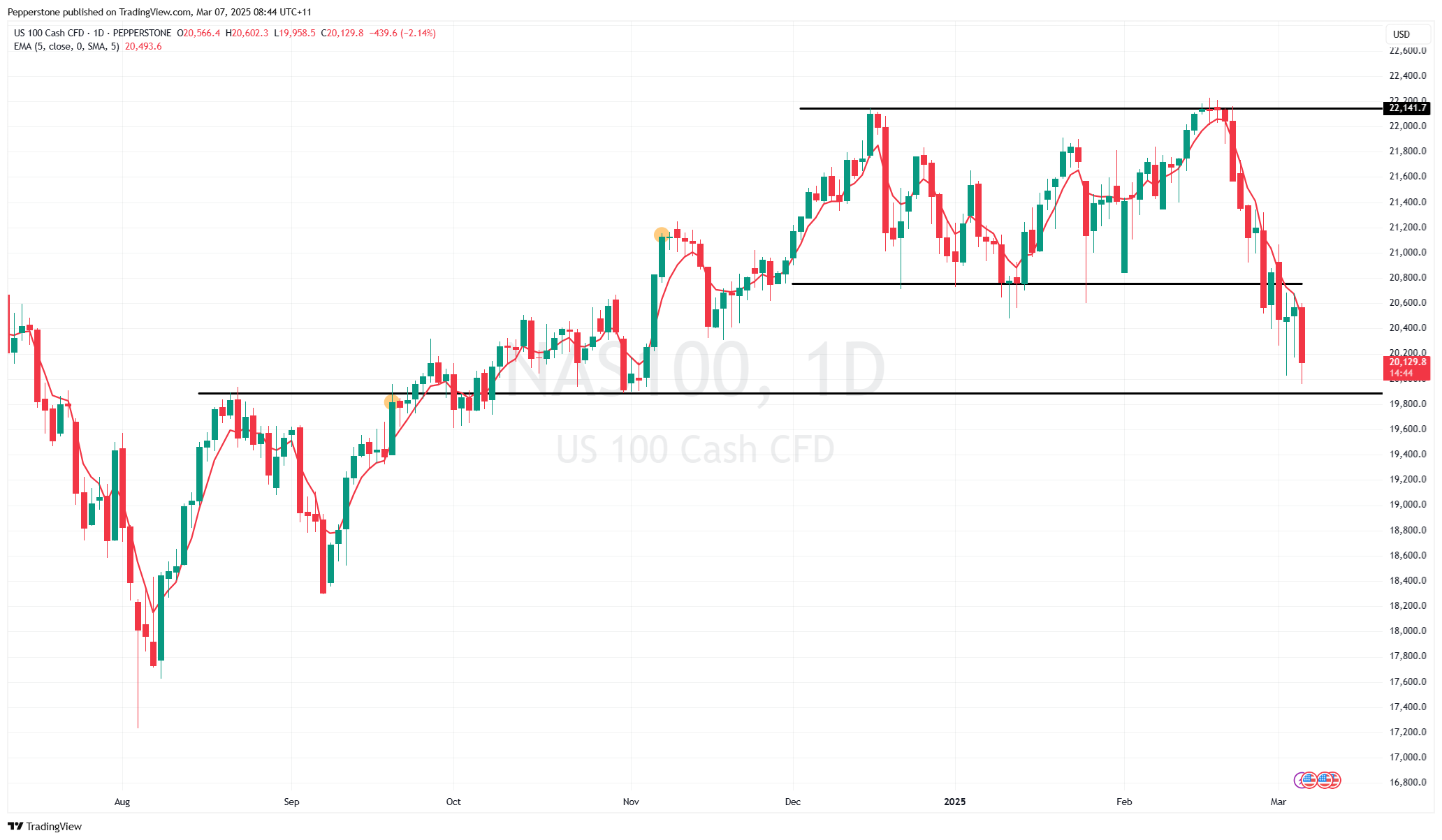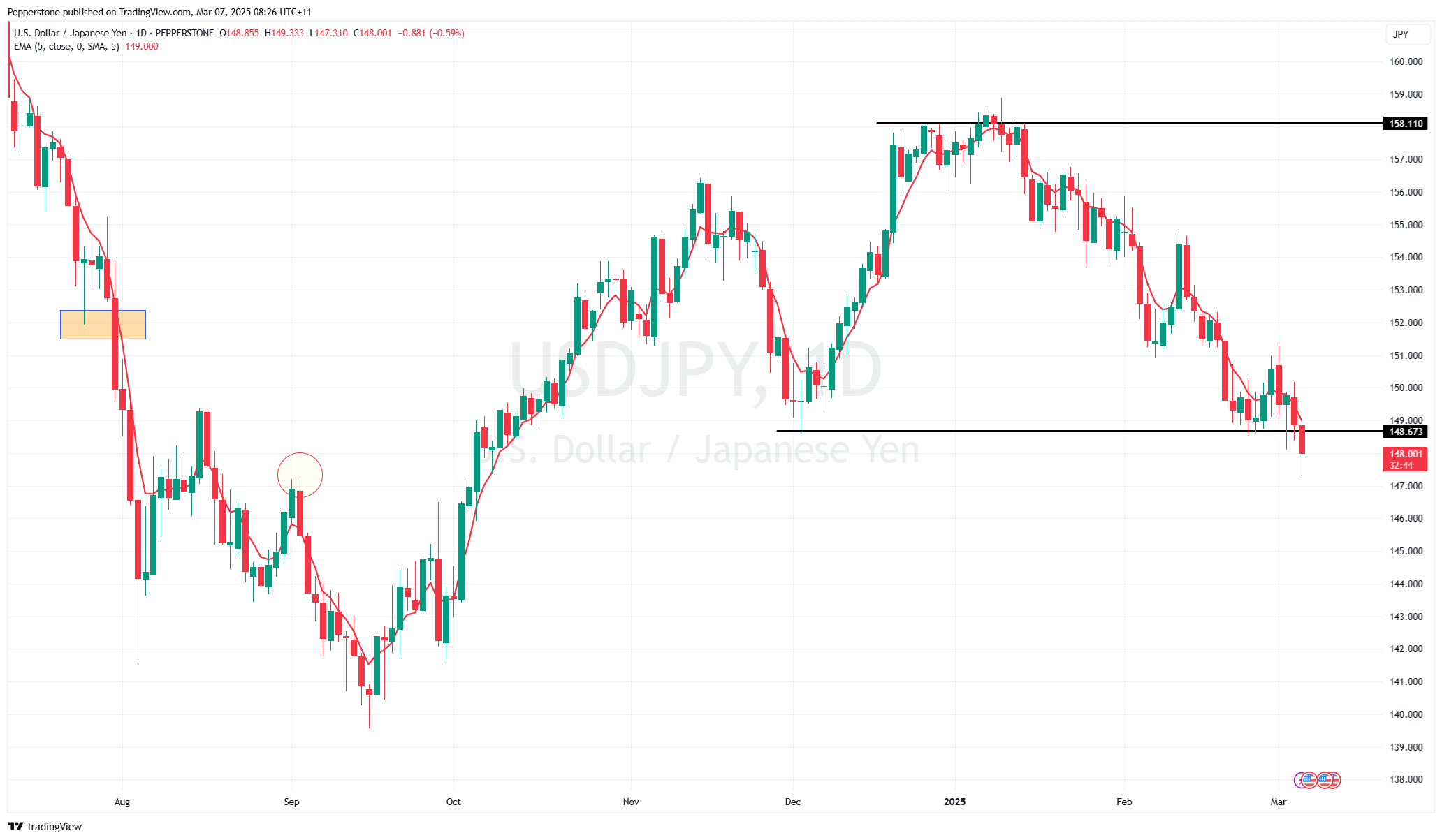US Equity Market Unwinds – Rising Volatility & Key Risk Factors


On a cross-asset basis, there has been good demand to play defence, with the funders (JPY and CHF) outperforming. USDJPY gets a strong focus with the spot rate smashing 148.65 support and re-enforcing this as a core tactical and technical short. US 2yr Treasury yields are 4bp lower, with crypto finding renewed selling pressure.

Confusion reigns around the Trump Administration policy agenda, and while we’ve seen yet another pause on Canadian and Mexican tariffs until 2 April, the lack of consistency to hold policy firm further limits the visibility US businesses have to position margins and to make strategic planning decisions.
Trump detailed that he’s “not even looking at the stock market” … it's easy to be sceptical on that call, but Trump needs to portray control when putting through the hard policies. The price action in US risk markets speaks to the broad collective holding increased doubts that the Administration have that control – they see confusion and a rising risk that US public policy will accelerate job losses to the point that business confidence and household consumption trends will be taken over a threshold, which could be hard to reverse. Despite US Treasure Secretary Scott Bessant’s call that it will be ‘Trump’s Economy’ in 6-12 months, whatever Trump throws at the situation may ultimately be too late.
Investors See Investment Opportunity in China and Europe
Compounding the issue is that investors also have real investment alternatives to US equity, with China and EU equity the obvious beneficiaries – it's in these jurisdictions that we see an increased focus on innovation, coming amid a backdrop of recent economic momentum, and fiscal and monetary support.
Clearly, a poor US nonfarm payrolls (NFP) report in the session ahead will not be tolerated by risk markets and will likely see an outsized reaction in US 2yr Treasuries and US interest rate swaps pricing – managing the risk that inherently comes with NFP is always problematic, as we’re hit with a number of variables to consider: The level of net job creation, revisions (to prior reads), the unemployment rate, and average hourly earnings, and the depending on sentiment at the time, the market will see what it wants to see in the data. The bear case would be an outcome of less than 140k jobs, a 4.1%+ unemployment rate and an uptick in average hourly earnings and should the totality of the data move in this direction, then one can assume the selling pressure on US equity will build.
A poor US NFP report would also set us up for a huge week ahead, with significant emphasis and market sensitivity placed on the NFIB small business optimism survey, US core CPI and PPI, with retail sales also falling on the radar, although not released until 17 March.
Asia looks to follow the lead the US has kindly provided, with the NKY225 called -1.7%, the HK50 -1.3% and the ASX200 -1%. Traders will naturally be thinking ahead and pre-positioning for the US NFP and the potential for impactful news through the weekend that would raise the possibility of gapping risk on Mondays open. Japan is the most vulnerable to selling pressure, with a stronger JPY and a high weighing of tech plays that are not attracting the global capital flows, unlike Alibaba and Tencent in HK.
Good luck to all.
The material provided here has not been prepared in accordance with legal requirements designed to promote the independence of investment research and as such is considered to be a marketing communication. Whilst it is not subject to any prohibition on dealing ahead of the dissemination of investment research we will not seek to take any advantage before providing it to our clients.
Pepperstone doesn’t represent that the material provided here is accurate, current or complete, and therefore shouldn’t be relied upon as such. The information, whether from a third party or not, isn’t to be considered as a recommendation; or an offer to buy or sell; or the solicitation of an offer to buy or sell any security, financial product or instrument; or to participate in any particular trading strategy. It does not take into account readers’ financial situation or investment objectives. We advise any readers of this content to seek their own advice. Without the approval of Pepperstone, reproduction or redistribution of this information isn’t permitted.